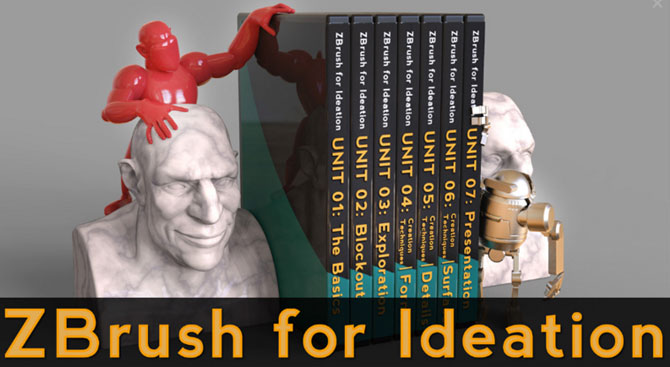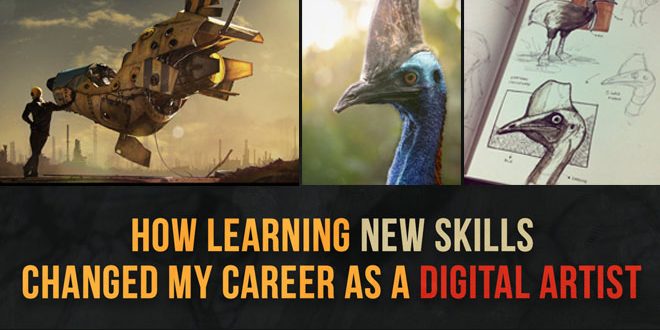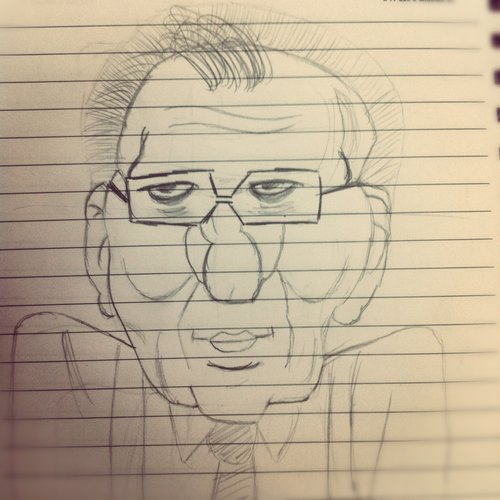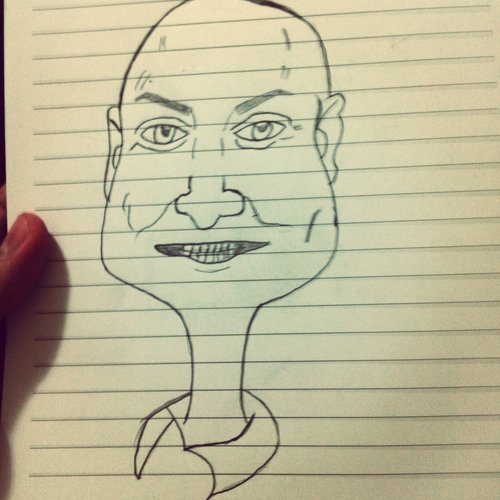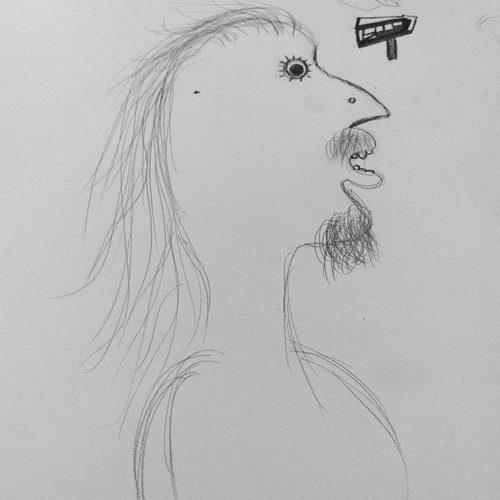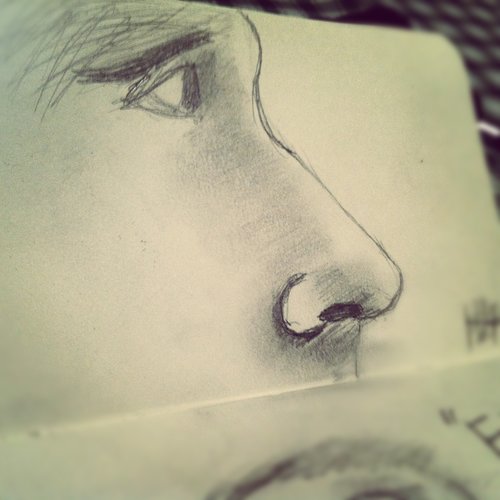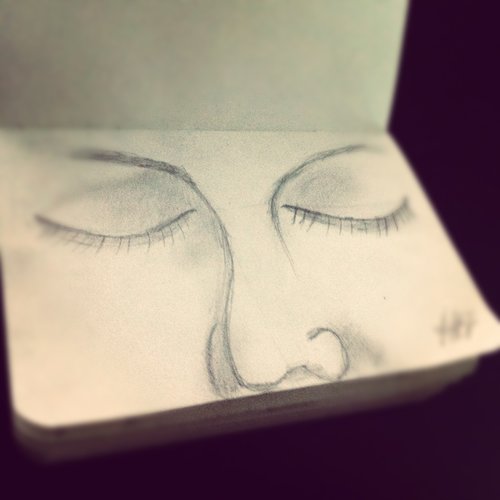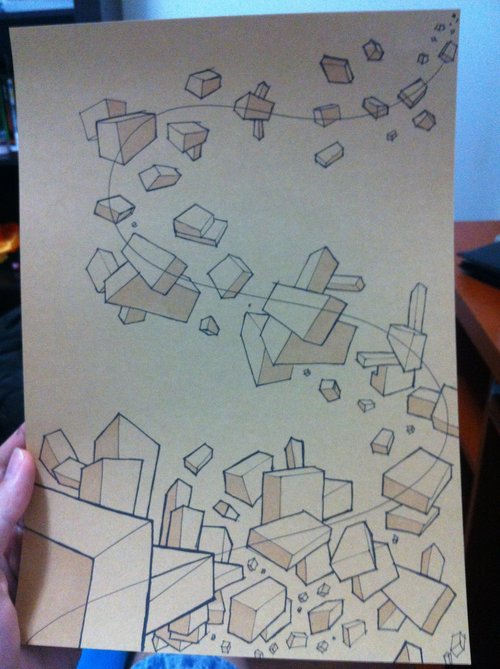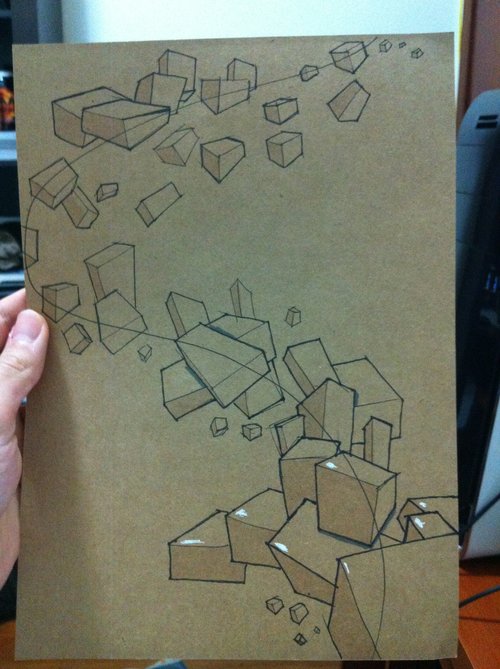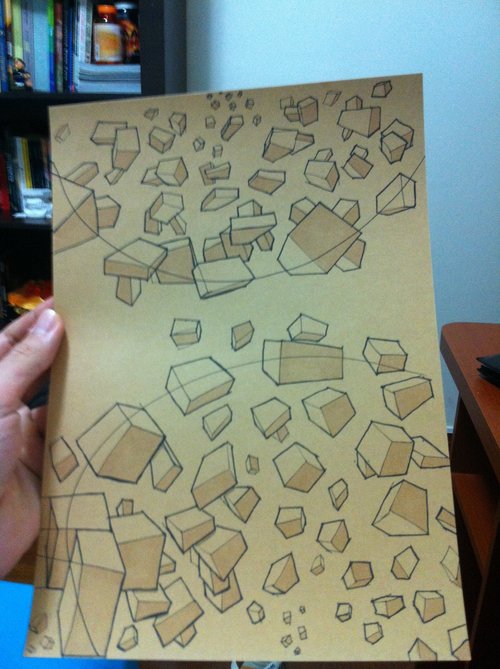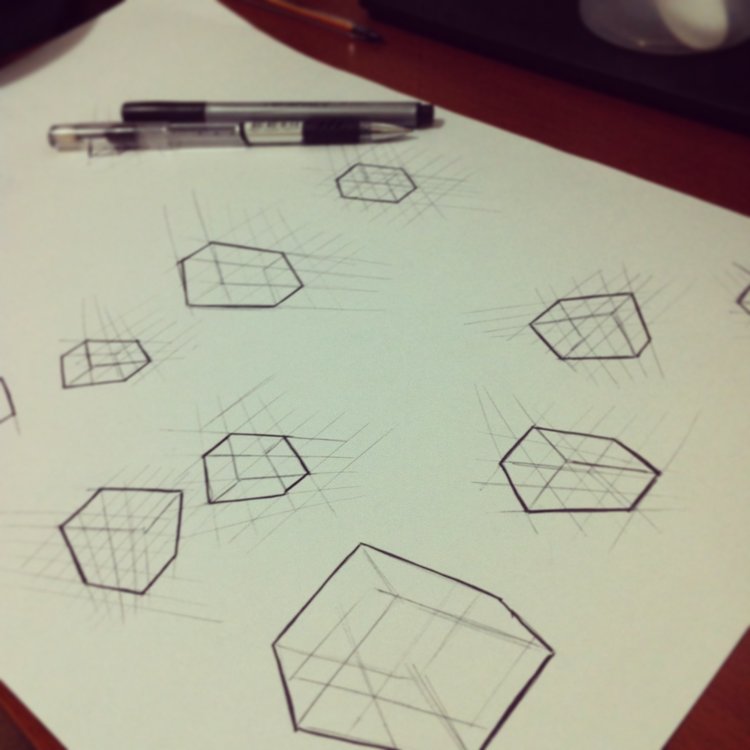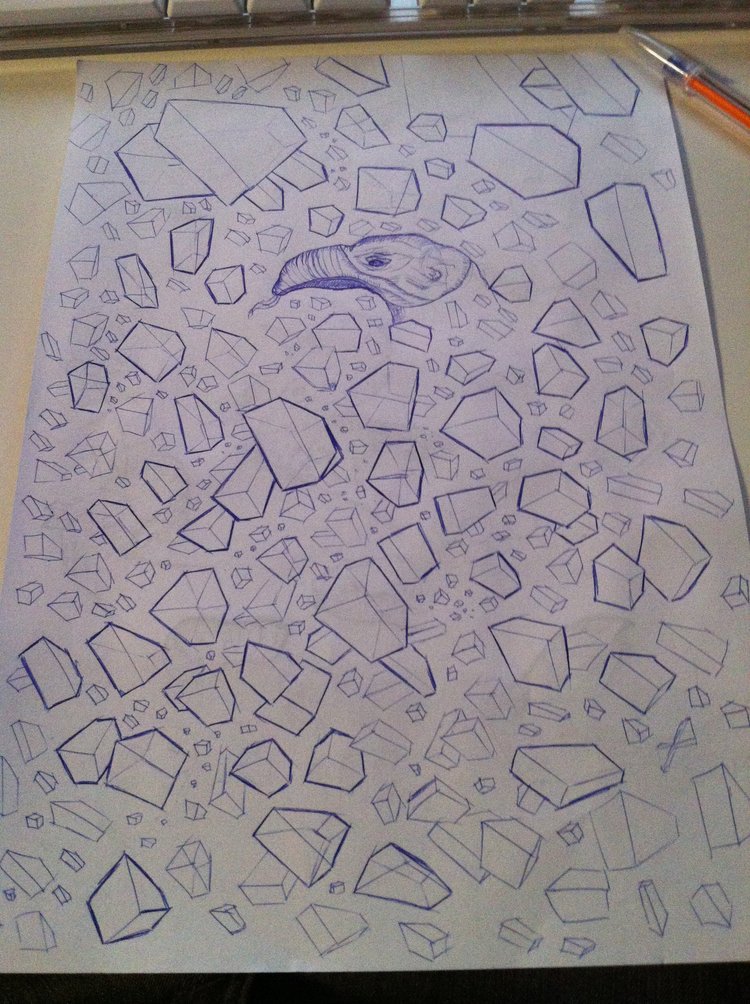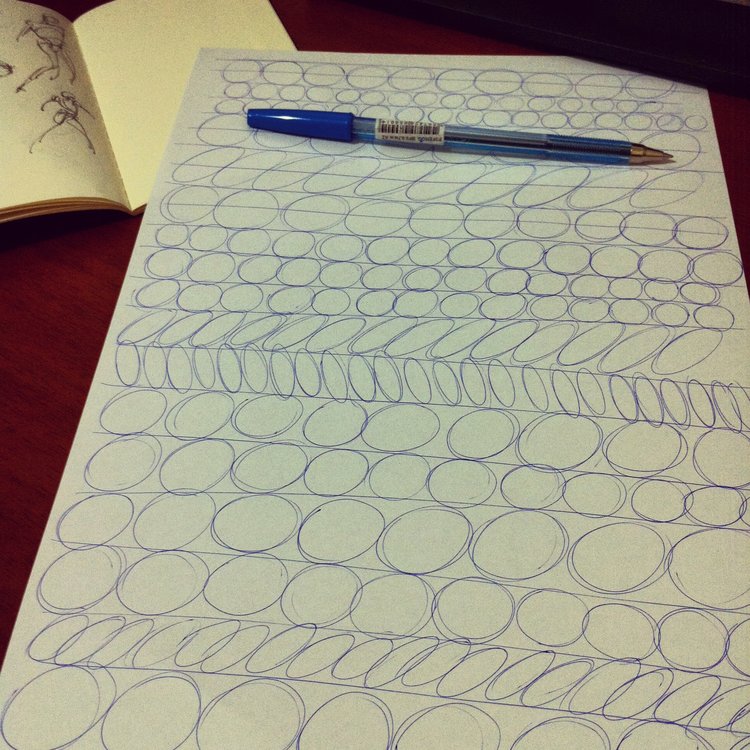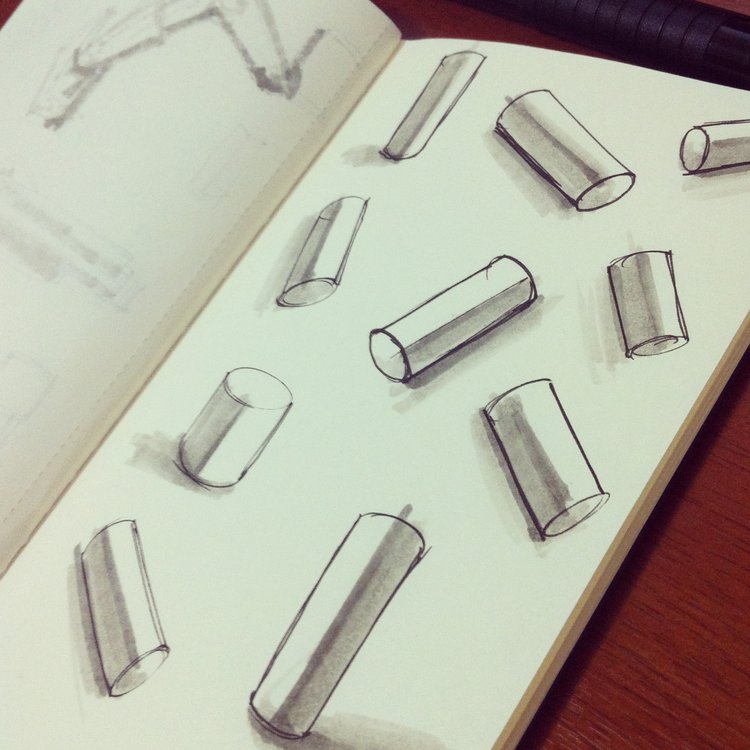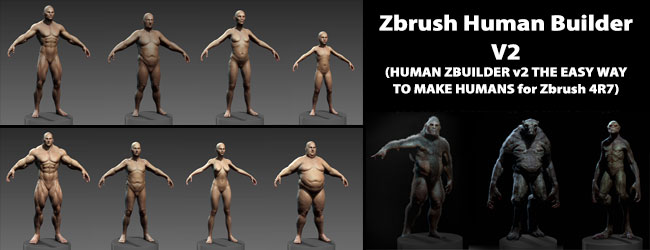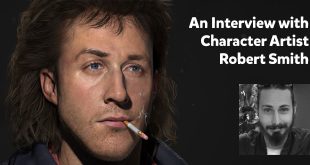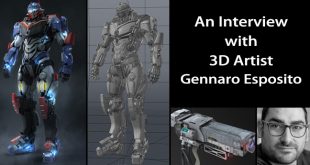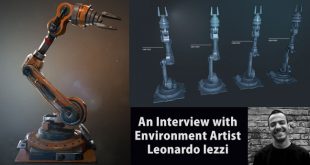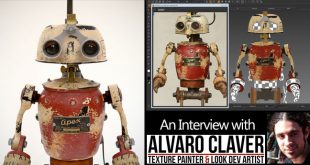HOW LEARNING NEW SKILLS CHANGED MY CAREER AS A DIGITAL ARTIST by Paul H. Paulino
PAUL H. PAULINO is a Texture Painter/Look Development Artist at Scanline VFX from Vancouver, Canada. Paul shared his latest article with zbrushtuts.com. Hope you liked it and will be inspiring. Read the article in his own words below.
Hey, guys! If you don’t know me, my name is Paul H. Paulino and I recently started working in the VFX industry. I am a Texture Painter/Look Development artist at Scanline VFX in Vancouver, Canada and in the past year and a half I had the opportunity to work on projects such as Independence Day: Resurgence, Miss Peregrine’s Home for Peculiar Children, Justice League, Guardians of the Galaxy Vol. 2 and Power Rangers.
In this article, I want to talk to you about the process of learning new skills and how they can help your development as a digital artist. In the beginning I’ll focus on my own experience with my drawing/painting learning process, but keep in mind that we have many other skills.
A few years ago I watched this presentation by Nick Campbell where he discussed the importance of “learning what doesn’t change”. In other words, he meant that learning theories such as color, composition, lighting, draftsmanship could be essential to a career as a digital artist.
Now that I am working in the creative industry I want to share how much I learned from his advice.
In the past months I’ve been getting messages from students all over the world due to my recent articles about the industry. They ask for tips and advice on how to get ready for it. After talking to them, I realized that their focus on learning only software was holding them back, exactly like it happened to me a few years ago.
Don’t get me wrong; I’m not saying that software learning isn’t relevant. It is, but you can become a better artist if you begin to develop other skills as well. James Gurney, one of my favorite traditional artists wrote this once on his blog:
That being said, I still believe that you don’t necessarily need traditional skills to in order to succeed in this industry. The whole point here is to discuss how you can take advantage of intangible skills and make your art look even better. You don’t need to become the next Leonardo Da Vinci, but maybe if you just understand the basics of color and light, you’ll be able to make that lighting scene in 3D more interesting.
Let’s get started:
AN UNEXPECTED JOURNEY
Back in 2012 I finally decided to learn 3D. Even though I didn’t have any clue on how to start, I was determined to become good at it. During that time I was establishing my career in motion graphics, and a friend suggested me to take a look at Cinema 4D; a software that, according to him, was friendlier than Maya or 3Ds Max.
I remember being super excited about it. Even though I was working two different jobs and finishing my college thesis, I found time during lunch to learn more about Cinema 4D and 3D modeling.
During my lunch break I would bookmark all kinds of free tutorials I could find and at night I would follow them meticulously, trying to achieve the same result.
After a couple of months doing this, I realized that I wasn’t improving at all. I couldn’t solve problems without looking at step-by-step tutorials and I didn’t feel I was creating anything. The reason was simple: I wasn’t learning. I was copying.
I felt like I needed to do something different to learn things properly and master the skills to become an artist. Soon I realized that it wasn’t just about practicing, it was about knowing how to practice.
After arriving at that conclusion I decided to put my 3D studies aside and, instead, I began learning more about drawing and painting.
To be honest, that conclusion didn’t come quickly. I spent a long time observing, reading and studying successful stories from artists all over the world and I realized that almost everyone highlighted the importance of learning at least the basics of art fundamentals.
That switch was incredibly difficult for me and here’s why: I won’t bore you by talking about my childhood, but I will say that I was never considered an artist. I always thought that real artists were born with a “gift,” and that’s why they were so good.
Here you can see some of my drawing attempts back then. Be careful, they might bee too awesome for your screen.
I was terrified of starting to learn how to draw because I knew I was going to fail – and fail a lot. The funny thing is, in the end, learning that failure is part of the process was one of the best things that happened to me.
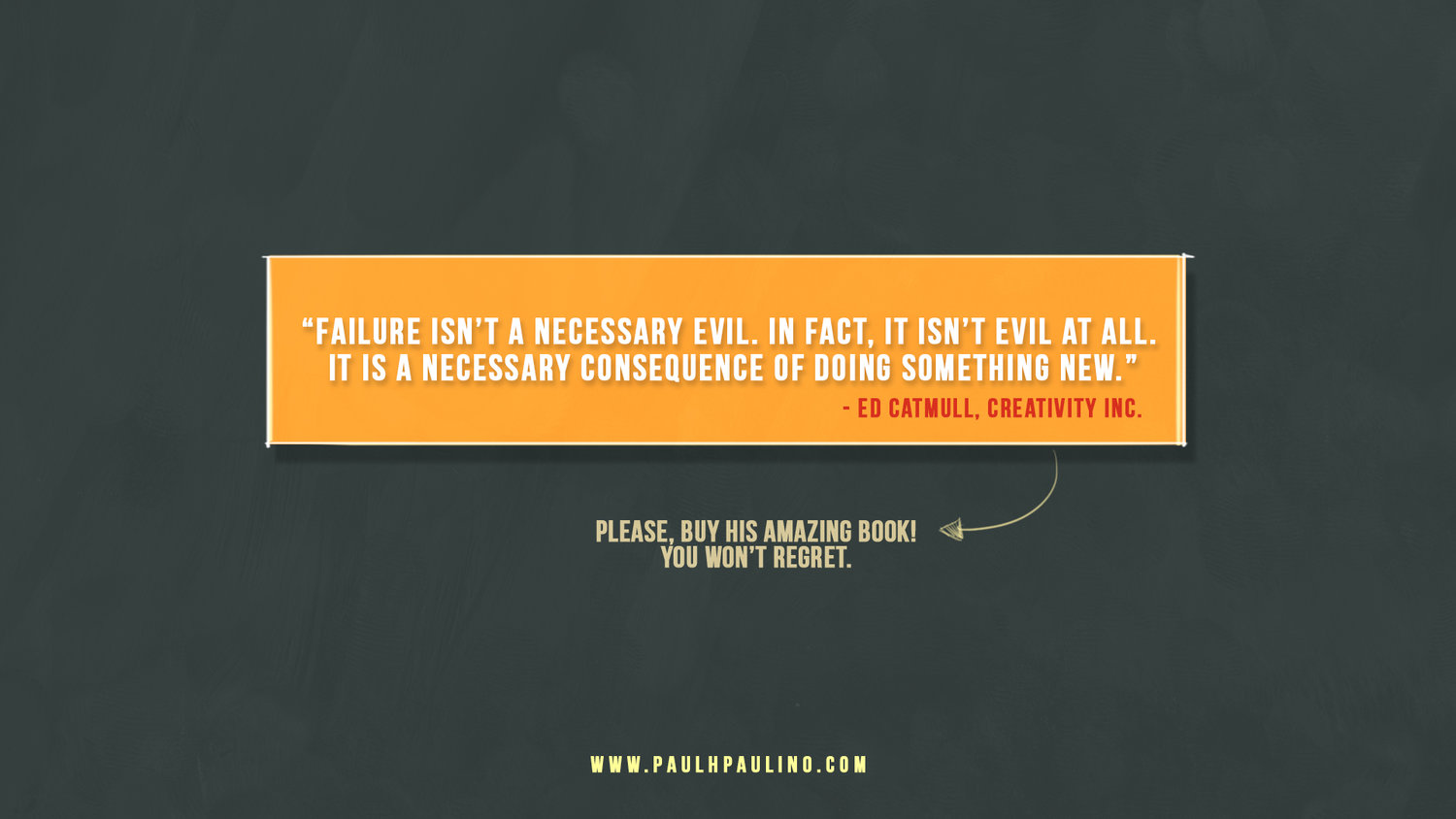
ENJOYING THE RIDE
Like I said, the beginning of my unexpected journey was terrifying. If you look at my drawings above (early 2012), you can understand why. But I kept pushing forward. After a few more months studying by myself I enrolled in two online courses at CGMA: Intro to Perspective and Dynamic Sketching I.
These courses were focusing on basic drawing fundamentals and, to be honest, in the beginning I thought that it was going to be hella boring. I wanted to draw characters and cool things! Why in hell I had to learn about cubes in perspective?
God knows how wrong I was.
When I started these classes I finally understood why I had failed before. I realized I didn’t know any fundamentals. I was always trying to draw characters and environments without understanding principles of perspective, form and color. Can you imagine someone working on a building without taking care of its foundation? The same principle applies here!
After uncovering my main weakness I decided to go back and learn again from the beginning. I remember spending months and countless reams of paper drawing only circles, lines, and cubes.
The images below show some exercises I use to practice. Drawing cubes along lines and making them floating in space: an excellent way to learn perspective and composition.
Any free time I had at work was enough for me to continue practicing my understanding of perspective and developing my draftsmanship skills by exercising with simple shapes and geometric forms.
After a few months of everyday practice, I started visualizing cubes and geometric shapes everywhere in my daily routine. I could even break down buildings into simple cubes, and so on. This might sound weird, but it was a significant improvement in my artistic skills.
When I was confident enough with my skills I tried different subjects such as animals, cars, buildings; always following the principles I learned. Peter Han, my Dynamic Sketching teacher was a fantastic instructor. He is a skilled draftsman who taught me a great way to simplify drawings and to focus on visual communication rather than excessive detailing. That’s exactly what I needed.
Below you can see some of my studies using the Dynamic Sketching technique:
During my studies I realized the process was more important than the final result. I knew since the beginning I didn’t want to become a professional illustrator. My goal was to develop my creativity and critical eye in a way that could be helpful as a CG artist.
In order to draw believable subjects I had to spend a good amount of time collecting references and doing research for each theme. When I did that I began expanding my visual library and creativity skills without even noticing it. I studied a variety of patterns, forms, and colors that I had never noticed before.
In other words, I could say that I finally learned to see and leave preconceptions behind. Instead of imagining how a bird looks in real life, I was able to do research and understand it. And that doesn’t mean having a perfectly rendered drawing. If you can capture the essence of the subject with a quick sketch, you already learned a lot. It’s all about visual communication.
Some of you might think that everything happened too quick, but the thing is: I put all my effort and my soul into this. I used to be so obsessed with the learning process that I would wake up in the middle of the night just to draw a little bit more. It was painful, but I would do everything again.
IT’S NOT JUST ABOUT DRAWING
I was lucky enough to be passionate about two different art forms way before I learned how to draw: I had experience working as filmmaker and photographer. These skills strengthen my perception of lighting and composition.
All the knowledge I acquired during those years were essential to my professional growth.
To be honest, it is quite easy to take photos or record videos nowadays. You don’t need an expensive camera anymore. Just grab your phone and go outside! Experiment different compositions and light setups. After a while, you’ll see significant improvement in your skills.
There are a few other skills, some of them not directly related to art (but still an art form in my opinion) that were essential during my journey.
I practiced martial arts for a few years, and I can tell you that I learned a lot about concentration, humility, and patience. These skills are excellent and even though I don’t train anymore I can still remember what I master during my classes.
If you want more examples to help to sharpen your skills and expanding your visual library, watch this video by Feng Zhu, where he explains it splendidly.
PUTTING NEW SKILLS INTO PRACTICE
When I came to Vancouver to study at Think Tank Training Centre I didn’t have any 3D software experience. It was terrifying because I only had a year to build my reel and I didn’t know if I was going to be able to finish it due to lack knowledge.
To my surprise, my learning skills were also refined; during the classes and assignments I was able to solve problems quickly and, before starting any project, I would make quick sketches for planning purposes. These were extremely helpful to achieve an interesting result.
When I worked on my project Wasp, the sketching stage was a great way to study different composition schemes. Having the ability to do that on a paper as opposed to going directly to the screen was great!
Remember those bird studies I did back then? They were my main inspiration to create my piece, The Southern Cassowary. I did so much research on that bird with my drawings and paintings that I decided to replicate that digitally. All the knowledge I acquired along the way was essential to achieving the final result in 3D.
Also notice all the notes I’d made! They can be really useful down the road.

When I finally chose my CG specialty in texture painting/look development, I was grateful that I spent all those months studying color, shadow, lighting and composition. Spending time learning those skills was finally paying off.
WHERE SHOULD I START?
Learning something from scratch can be challenging and painful. That’s why I want to share a few online resources and books that helped a lot during my learning process.
DRAWING/PAINTING
Ctrl+Paint – Website – An amazing website with a great collection of free and premium tutorials. Matt Kohr is an amazing teacher, his videos are easy to follow and very didactic. If you don’t have any art background I recommend following all his basic video tutorials.
Color and Light: A Guide for the Realist Painter by James Gurney – Book – I love this book. It was my first art book and I can’t explain how much I learned from it. Mr. Gurney is an amazing traditional artist and he explains all the principles you need to know about color and light. A must-have. He also has a blog where he shares a lot of cool things with his audience, check it out
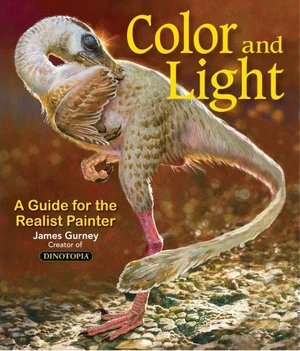
Sycra – Youtube Channel – I used to watch a bunch of youtube channels back then Sycra’s is still one of my favorites.
Scott Robertson – Youtube Channel – Scott Robertson is a legend. With more than 18 years of experience teaching how to design, draw and render at the highest college level, Scott instructed and inspired a whole generation of artists. You should also check his amazing book How to Draw.
ANATOMY
Proko – Youtube Channel – Proko is a well-known artist who has a funny and instructive youtube channel. He makes anatomy and gesture look simple and he has a great sense of humor.
Figure Drawing: Design and Invention by Michael Hampton – Book – I had a few online classes with Michael Hampton and I loved the way he simplifies anatomy analytically.
COMPOSITION AND PERSPECTIVE
Framed Ink: Drawing and Composition for Visual Storytellers by Marcos Mateu-Mestre – Book – A great book if you want to learn more about composition and visual storytelling.
The Secret to Composition by Lulie and Perspective + Composition by Fox-Orion – Tutorials – Two great tutorials explaining basic concepts of perspective and composition.
FINDING THE RIGHT BALANCE
Learning a software is essential to be successful in a creative industry, but keep in mind that they are just tools and tools can change quickly. Imagine if tomorrow they discontinue the only software you use. What are you going to do? That’s why I think it’s important to learn things that won’t change.
It is crucial for us to be flexible and adjust to each challenge. Always be a student.
Even though I told you all my story on how I learned all these different skills, I’m still learning new skills every day. Of course, it’s not easy. It’ll never be. I do not want it to be. The challenge is the most exciting part of it all and it’s what keeps me wanting to grow every day. Use your motivation to face your fears and follow your dreams!
And if you’re still not motivated, just follow Bruce Lee’s advice:
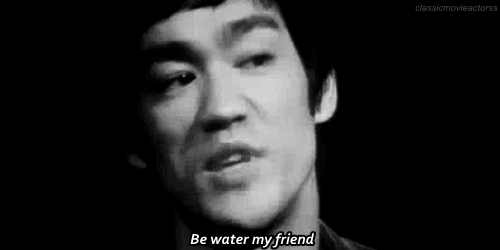
FINAL THOUGHTS
I hope you found this article useful. It was by far the most thoughtful article I wrote so far. I also want to thank my dear friends Tito Ferradans and Anna Ivanova for proofreading it.
The process I’ve been through to learn these skills changed my life completely and I want you to experience the same.
If you always wanted to draw but you think that you don’t have the talent, just give it a try. Start it simple and in a few months you’ll definitely see improvement. I bet you! If you do, please send me your progress! I’d love to see it 😉
If you enjoyed the read, please share it with your friends. If you are interested in more content like that in the future, make sure to follow me on social media. In case you have questions or suggestions please let me know!
You can send me an email at paulhpaulino@gmail.com
Watch the article at: http://www.paulhpaulino.com/how-learning-new-skills-changed-my-career-as-a-digital-artist/
Linkedin: https://www.linkedin.com/pub/paul-h-paulino/42/699/743
Facebook: https://www.facebook.com/paulhpaulino
Youtube: https://www.youtube.com/channel/UC8d987pGa3Kat16oW_LtsjQ
Behance: https://www.behance.net/paulhpaulino
Vimeo: http://vimeo.com/paulhpaulino
 zbrushtuts Zbrush Tutorials, Art and Breakdowns
zbrushtuts Zbrush Tutorials, Art and Breakdowns


